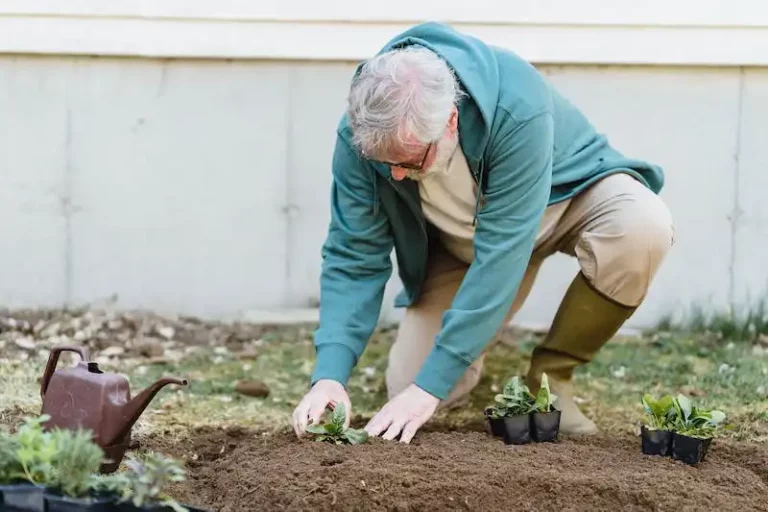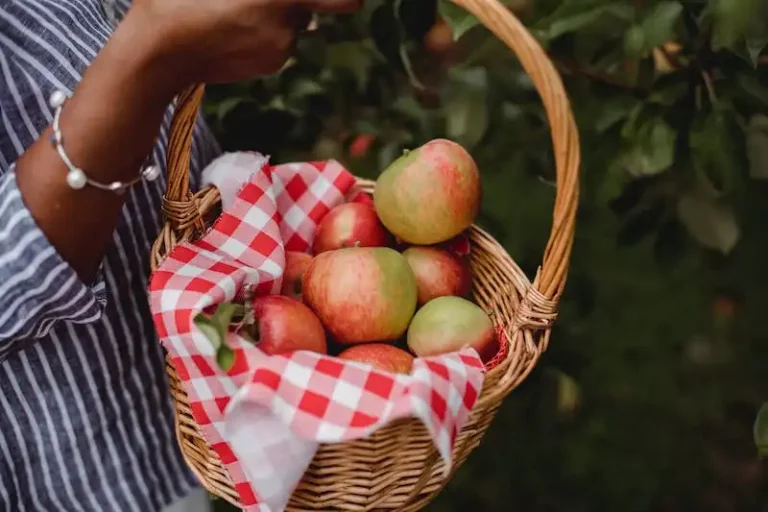When it comes to choosing the right material for your planting beds, there are a few factors to consider. Both rocks and mulch can be used to create beautiful and practical landscapes around homes, but they have their pros and cons. Let’s take a look at five key factors to help you decide which option is best for your needs.
First and foremost, consider the appearance you’re aiming for. If you’re looking for a clean and polished look, rocks may be the way to go. They come in a variety of sizes, shapes, and colors, allowing you to create a visually striking design. On the other hand, if you prefer a more natural and organic look, mulch can complement the flowers and trees in your planting beds.
Another aspect to consider is maintenance. Rocks are low-maintenance and can last for years without needing to be replaced. They don’t break down or decompose like mulch, so you won’t have to worry about replacing it every year. However, mulch provides benefits for the soil. It helps retain moisture, regulates soil temperature, and can add nutrients to the plants.
Furthermore, think about the practical aspects. Mulch provides a soft surface for walking and kneeling when gardening. It also acts as a barrier, preventing weeds from growing. Rocks, on the other hand, can be a source of heat, especially if you choose darker colors or lava rocks. This can be ideal for winterbloom flowers or plants that thrive in warmer climates.
Before making a decision, also think about the cost and availability of the materials. Mulch is generally cheaper and can be easily found at local garden centers. Rocks, on the other hand, may require transportation and can be more expensive depending on the type and size you choose.
In conclusion, both rocks and mulch have their advantages and disadvantages when it comes to planting beds. Consider the appearance, maintenance, practicality, and cost before making your choice. Ultimately, it’s important to choose the option that best suits your home’s aesthetics and the needs of your plants.
Rock Garden Ideas Design and Plants
When designing a rock garden, there are several factors to consider before settling on a design:
- Scale: Evaluate the size of your landscape and choose rocks that are in proportion to the overall space.
- Contrast: Look for rocks that have a variety of colors and textures to add visual interest to the garden.
- Placement: Consider the natural placement of rocks, such as using larger rocks as focal points and smaller rocks for borders or pathways.
- Plant selection: Choose plants that will complement the rocks and thrive in the specific conditions of your garden.
- Color and flowers: Consider adding flowers or mosses that will add pops of color to the rock garden.
- Maintenance: Determine how much maintenance your rock garden will require and choose plants and rocks accordingly.
Here are some tips to help you choose the right rocks for your rock garden:
- Size: Use rocks of different sizes to create visual interest and texture.
- Texture: Choose rocks that are smooth or have unique shapes to add visual appeal.
- Color: Select rocks that will complement the surrounding flora and add depth and variety to the garden.
- Placement: Install the rocks in a natural-looking way that mimics their formation in a river or mountain landscape.
- Maintenance: Consider how easy or difficult it will be to weed and maintain the rock garden before choosing rocks.
When it comes to plant selection, there are many options to consider:
- Narcissus: These flowers bloom early in the year and add a splash of color to the rock garden.
- Coral Bells: These plants have colorful leaves and flowers that can add a touch of elegance to the garden.
- Mosses: Mosses can create a lush, green carpet that looks beautiful against the rocks.
In conclusion, a well-designed rock garden can instill a sense of tranquility and beauty in your landscape. By choosing the right rocks, plants, and maintaining them properly, you can create a stunning and low-maintenance garden that will enhance the overall look of your outdoor space.
PLANNING A ROCK GARDEN
Rock gardens are a popular choice for homeowners who want to add a unique and natural element to their landscaping. Whether you love the look of rocks or prefer the more ornamental style of mulch, there are a few things to consider before you start planning your own rock garden.
First, you’ll need to evaluate the source of your rocks. Are you going to use rocks that you already have on your property, or will you need to purchase them from a supplier? It’s important to choose rocks that are appropriate for your site and can withstand the elements. Lava rock is a popular choice for its rough texture and unique color, but it may not be the best option if you have a lot of flat, open spaces.
Next, think about the structure of your rock garden. Some designers recommend choosing larger rocks to create a foundation, while others prefer smaller rocks for a more natural look. Taller rocks can also be used to create height and interest in your rock bed.
When choosing flowers and plants for your rock garden, it’s important to keep the style of your garden in mind. Some flowers, like crocus or spring bulbs, will look good in a rock garden, while others may not be the best choice. The goal is to create a garden that looks good all year round, so be sure to choose plants that will thrive in your specific climate.
If you’re not sure where to start, it can be helpful to draw out a plan or make a list of the features you want in your rock garden. You can also take inspiration from photos or visit local gardens to get ideas for your own design.
Before you start installing your rock garden, there are a few tips to keep in mind. First, make sure to wash your rocks before placing them in the ground. This will remove any dirt or debris and help the rocks blend in better with their surroundings. You can also fertilize your plants to ensure they get the nutrients they need to thrive.
Overall, planning a rock garden is a way to instill some structure and natural beauty into your landscaping. Whether you prefer the rough texture of lava rock or the smooth look of river rock, there are endless possibilities for creating a unique and successful rock garden.
Choose and evaluate your site
When choosing between rock and mulch as a ground cover for your planting beds, there are several factors to keep in mind. The size of your site is an important consideration. Smaller sizes are generally better, as they are easier to work with and provide more design options. Designers often use rocks of different sizes to create structure and visual interest.
Another factor to consider when choosing between rock and mulch is the overall aesthetic you want to achieve in your landscape. Rock can provide a neat and natural look, while mulch can create a softer and more organic appearance. Both options have their advantages, so it’s important to consider what will best complement the other elements in your landscape.
The source of the materials also matters. Rocks can be sourced locally or from a rock yard, while mulch is typically made from shredded wood or other organic materials. Consider which option is more readily available and environmentally sustainable in your area.
Think about the specific plants you will be using in your planting beds. Some plants, such as winterbloom plants, thrive in rocky soil, while others prefer a smooth soil surface. Make sure to choose the option that will best support the growth of your desired plants.
Consider the drainage needs of your site. Rock allows water to drain quickly, which can be beneficial in areas with heavy rainfall. On the other hand, mulch retains moisture and can help to keep the soil moist in drier climates. Evaluate your site’s drainage requirements and choose the option that will best meet those needs.
Here is a list of pros to consider when choosing between rock and mulch for your planting beds:
| Rock | Mulch |
|---|---|
| Low maintenance | Can improve soil health |
| Durable and long-lasting | Provides insulation for plant roots |
| Offers a clean, flat surface | Can deter weeds |
| Adds contrast to ornamental plants | Helps retain moisture in the soil |
| Can be used to create visual focal points | Breaks down over time and enriches the soil |
Consider the maintenance requirements of your chosen ground cover. While both rock and mulch will require some level of maintenance, they have different needs. Rock may need occasional cleaning to remove debris, while mulch may require raking or replenishing over time. Keep this in mind when making your decision.
Ultimately, the choice between rock and mulch for your planting beds will depend on your personal preferences, the specific needs of your site, and the desired aesthetic. Take the time to evaluate your site properly, and consider seeking advice from a professional landscaper or gardener to ensure you make the best choice for your outdoor space.
Research
Before choosing between rock and mulch for your planting beds, it is important to do some research. Evaluate the needs of your specific site and the goals you have for your garden. Consider the climate and weather conditions involved.
Research the different materials and ideas available for your planting beds. Look for success stories and examples of how others have used rock or mulch in their gardens. Evaluate the pros and cons of each option.
Consider the maintenance involved with each choice. Rock requires less maintenance and can provide a more low-maintenance look to your garden. Mulch, on the other hand, can help improve the growth of your plants by retaining moisture and suppressing weeds.
Research the plants you plan to grow in your planting beds. Some plants may prefer mulch, while others may prefer rock. Consider the specific needs of each plant, such as their water requirements and preferred soil conditions.
| Rock | Mulch |
|---|---|
| Provides a smooth and structured look | Creates a natural and organic appearance |
| Requires a basic to no maintenance | May need to be replenished periodically |
| Can be used to highlight trees, flowers, or other plants | Provides a contrast to the plants and adds visual interest |
| May let weeds grow between the rocks | Helps suppress weed growth in the planting beds |
| Comes in various sizes, colors, and styles | Basic mulch and decorative mulch options are available |
| Can be designed to draw attention or blend in with the surroundings | Offers a more cohesive and uniform look |
Research the placement and level of rocks or mulch in your planting beds. Consider the curb appeal and the overall look you want to achieve. Think about the style of your home and how the rocks or mulch will complement it.
Research the care and maintenance of plants in rock or mulch planting beds. Understand how to properly prune and care for the plants to ensure their growth and health.
Research the source of the rocks or mulch you choose. Consider the environmental impact and sustainability of the materials. Look for locally-sourced options or consider using recycled materials.
Research the winter and spring issues regarding rocks and mulch. Rocks may become slick and dangerous in icy conditions, while mulch may require debris removal in the spring.
By researching and evaluating every aspect, you can make an informed decision between rock and mulch for your planting beds. Consider consulting with a professional landscaper or gardening expert for further guidance and advice.


